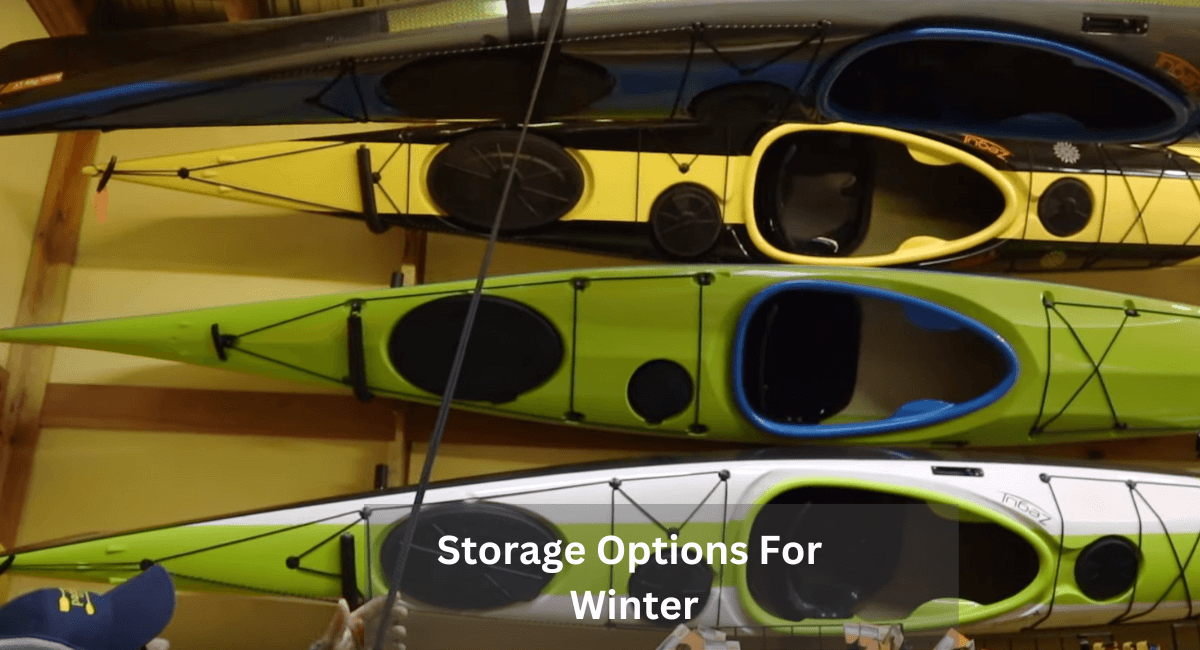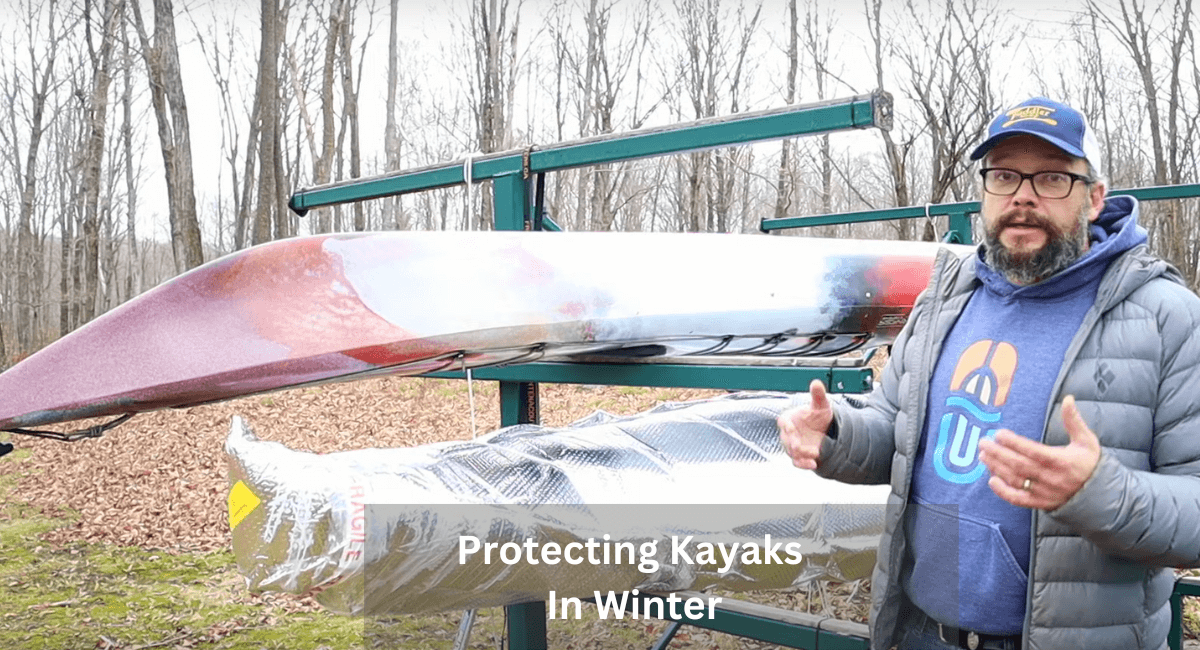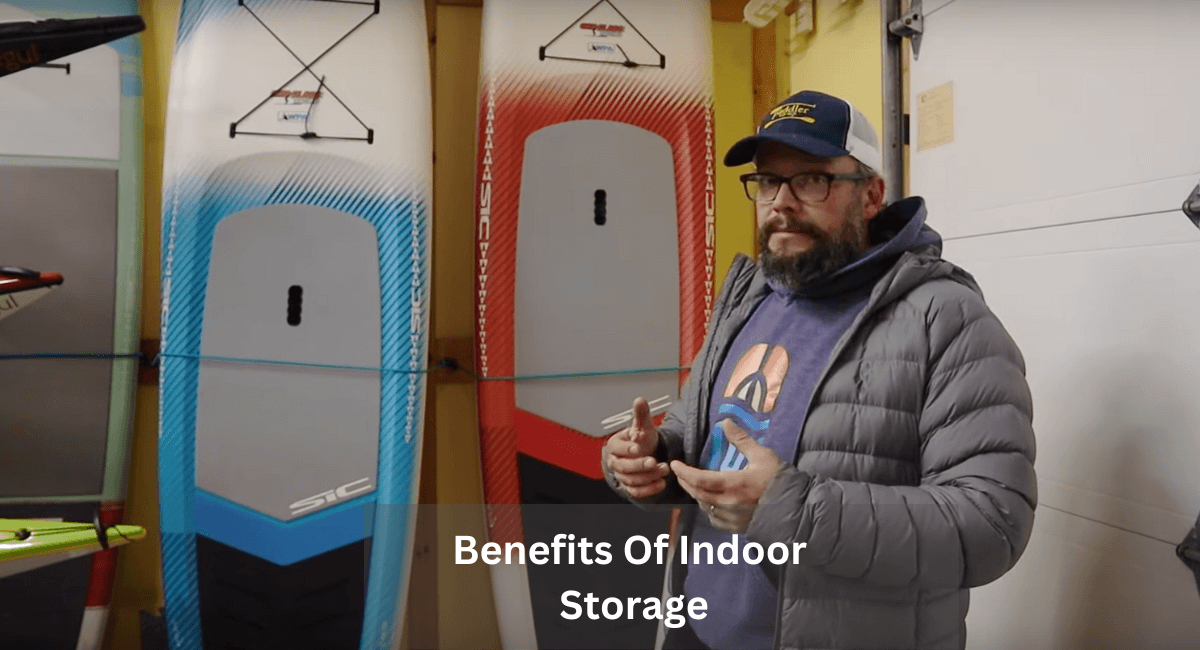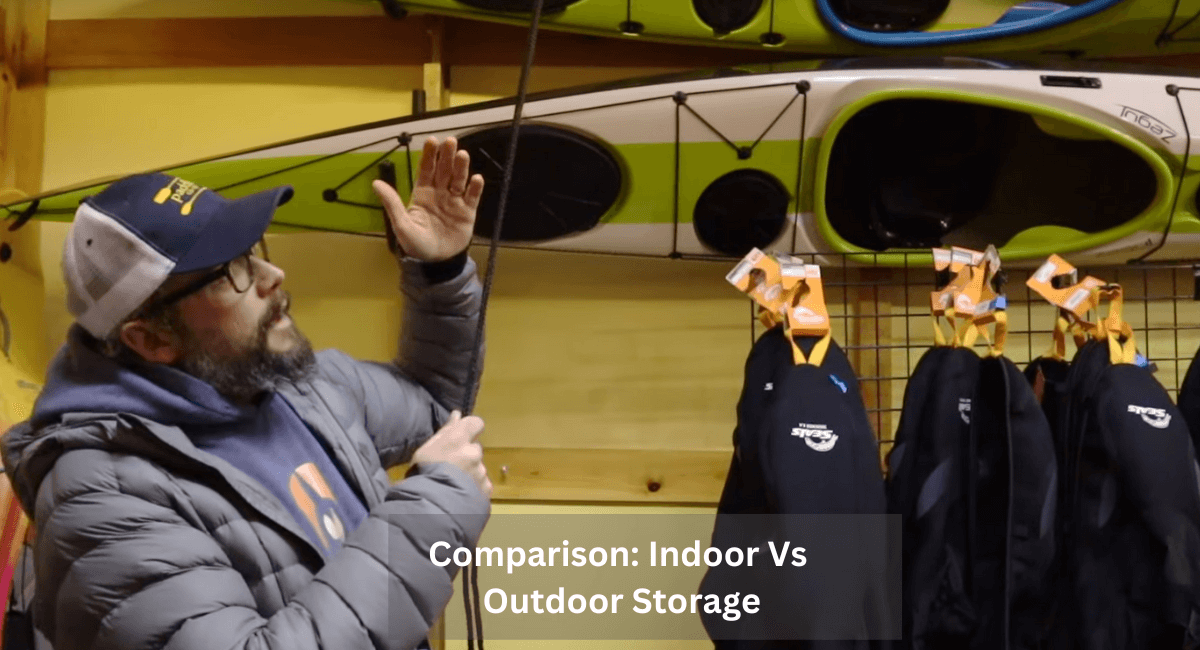Yes, a kayak can stay outside in winter, but it is essential to protect it from harsh weather conditions to prevent damage. The winter elements can potentially harm the kayak, so proper storage and maintenance are crucial.
Kayaks are durable watercraft designed to withstand various conditions, including winter weather. However, exposure to freezing temperatures, snow, and ice can cause damage if left unchecked. Properly storing the kayak away from direct sunlight, snow build-up, and extreme temperatures can help maintain its integrity.
Additionally, regular inspections and cleaning during the winter months can prevent any long-term issues. Taking these precautions will ensure that your kayak remains in good condition and ready for use when spring arrives.
Impact Of Winter Conditions On Kayaks
Winter conditions can significantly impact the performance and integrity of kayaks when kept outside. Understanding how various elements such as temperature, snow, and ice affect kayaks is crucial for proper winter storage and maintenance. Let’s delve into the specific considerations for each aspect.
Temperature Considerations
Extreme cold weather can weaken the materials of a kayak over time, especially if the temperature frequently fluctuates between freezing and thawing. When water gets into the kayak and freezes, it can cause cracking and damage to the hull and other components. It’s essential to avoid leaving kayaks exposed to sub-zero temperatures for prolonged periods.
Snow And Ice Effects
Snow and ice accumulation can add extra weight to kayaks, potentially causing strain on the structure. Additionally, prolonged exposure to moisture from melted snow and ice can lead to corrosion of metal parts, such as bolts and fastenings. Proper protective covering or storage techniques are vital to prevent these issues.
Storage Options For Winter

During winter, it is not recommended to leave a kayak outside due to potential damage from freezing temperatures. It is best to store your kayak indoors, in a garage or shed, to protect it from the harsh winter conditions. Storage racks or covers can also help prolong the life of your kayak.
Outdoor Storage
When winter approaches, consider outdoor storage options for your kayak. Covering it with a tarp can protect against snow and ice.
- Use a secure, waterproof cover.
- Elevate the kayak off the ground to prevent moisture damage.
Indoor Storage
To protect your kayak from the harsh winter elements, indoor storage is ideal. Find a dry, insulated area like a garage or basement.
- Clean the kayak before storing it indoors.
- Ensure proper ventilation to prevent mold growth.
Protecting Kayaks In Winter

During winter, it is best to protect kayaks by storing them indoors to prevent damage. Extreme cold weather can cause kayak materials to weaken and crack, compromising their durability. Storing kayaks indoors will ensure their longevity and keep them in top condition for future use.
Covering The Kayak
Be sure to cover your kayak with a waterproof tarp to shield it from snow and ice.
Anti-freeze Measures
Apply anti-freeze solutions to metal parts like bolts to prevent corrosion during winter.
Maintenance Tips For Winter
As the winter season approaches, it’s essential to ensure that your kayak is well-maintained even when not in use. Proper maintenance during winter can help extend the lifespan of your kayak. Here are some key maintenance tips for winter that will help keep your kayak in top condition.
Inspecting For Damage
Begin by carefully examining your kayak for any signs of damage that may have occurred during use or while it was in storage. Look for cracks, dents, or any other visible damage to the hull, deck, or any other parts of the kayak.
Lubricating Moving Parts
During the winter months, it’s important to pay close attention to the moving parts of your kayak. Apply lubricant to the hinges, rudder, and any other movable components. This will help prevent them from seizing up due to the cold temperatures and moisture.
Benefits Of Indoor Storage

Maximize the lifespan of your kayak by storing it indoors during the winter. Indoor storage shields your kayak from harsh weather conditions, preventing damage and deterioration. This also saves space and reduces the risk of theft or vandalism.
When it comes to preserving the longevity and quality of your kayak, indoor storage during the winter months is a wise choice. By keeping your kayak sheltered from the harsh elements, you can prevent freezing and protect it from moisture, dirt, and other external factors. Let’s take a closer look at the benefits of indoor storage for your kayak.
Prevention Of Freezing
Freezing temperatures can wreak havoc on your kayak’s structural integrity. When left outside in the winter, water can seep into crevices and freeze, causing cracks and damage. Fortunately, indoor storage provides an effective solution to prevent freezing.
How does indoor storage prevent freezing?
- Indoor storage maintains a consistent temperature above freezing levels, ensuring that water cannot freeze inside your kayak.
- Kayaks stored indoors are protected from drastic temperature changes that can cause expansion and contraction, leading to potential damage.
Protection From External Elements
In addition to preventing freezing, indoor storage shields your kayak from various external elements that can significantly compromise its condition. Exposure to snow, rain, wind, and direct sunlight can gradually deteriorate your kayak over time.
How does indoor storage protect from external elements?
- Indoor storage keeps your kayak safe from snow and rain, preventing moisture from entering and causing mildew or corrosion.
- Shielding your kayak from continual exposure to wind prevents it from getting blown over or damaged by debris.
- Direct sunlight can cause color fading and weaken the kayak’s material. Indoor storage keeps your kayak away from harmful UV rays.
Overall, the benefits of indoor storage for your kayak during winter are clear. By preventing freezing and protecting it from external elements, you are ensuring that your kayak remains in excellent condition, ready for your next adventure when the warmer months arrive.
Drawbacks Of Outdoor Storage
Kayaks left outdoors during winter face several drawbacks. Exposure to extreme weather conditions can result in damage such as cracking, warping, or fading due to sunlight and freezing temperatures. Additionally, snow and ice buildup can add weight and stress to the kayak, potentially causing structural issues.
Risk Of Freezing Damage
Prolonged exposure to freezing temperatures can cause serious damage to your kayak when left outside during winter. Freezing water can expand and contract, leading to cracks and fractures in the kayak’s hull.
These cracks can weaken the structure and compromise the integrity of the kayak. Moisture from melted ice or snow can also seep into small crevices, freeze again, and create further damage. It is important to note that even minor cracks can worsen over time and can be expensive to repair. Therefore, storing your kayak in a controlled indoor environment can help prevent freezing damage and prolong its lifespan.
Exposure To Harsh Weather
Leaving your kayak outside in winter exposes it to a wide range of harsh weather conditions. Snow, sleet, rain, and even strong winds can all take a toll on your kayak. Snow accumulation can put excess weight on the kayak, potentially distorting its shape or causing it to collapse under the pressure.
Wind can also cause the kayak to topple over or get blown around, risking damage from impact with other objects. Additionally, exposure to UV rays from the sun can result in fading and deterioration of the kayak’s exterior. To protect your kayak from these elements, it is recommended to store it in a sheltered area such as a garage, shed, or kayak storage rack.
It’s important to keep in mind these drawbacks of outdoor storage to ensure the longevity and proper maintenance of your kayak. By taking proactive measures to protect your kayak from freezing damage and harsh weather conditions, you can enjoy many more adventurous paddling seasons to come.
Comparison: Indoor Vs Outdoor Storage

When it comes to storing your kayak during the winter months, you may be wondering whether to keep it indoors or outdoors. Let’s examine the comparison between indoor and outdoor storage for your kayak.
Cost Considerations
Indoor storage: The cost of indoor storage for a kayak can vary depending on factors such as location, facility amenities, and whether it’s a self-storage unit or a commercial storage facility.
Outdoor storage: Outdoor storage options such as covers or shelters are typically less expensive than indoor storage. However, the cost of potential repairs due to weather damage should also be factored into the overall cost.
Long-term Impact On Kayak
Indoor storage: Storing your kayak indoors can protect it from harsh winter weather, UV exposure, and potential theft. This can help preserve its structural integrity and prolong its lifespan.
Outdoor storage: When left outside, a kayak is exposed to extreme temperatures, moisture, and UV rays, which can lead to fading, warping, and degradation of the kayak’s materials over time.
Frequently Asked Questions Of Can Kayak Stay Outside In Winter
Can Kayaks Stay Outside In Winter?
Yes, kayaks can stay outside in winter, but they need proper protection. It’s recommended to cover the kayak with a waterproof tarp and store it in a shaded area to protect it from harsh weather conditions. Additionally, make sure to remove any excess water from the kayak to prevent freezing and damage.
Conclusion
Storing your kayak outside in winter requires careful consideration and proper preparation. By following the tips outlined in this post, you can ensure your kayak remains in good condition and ready for use come springtime. Taking the time to protect your kayak from harsh winter elements will extend its lifespan, saving you time and money in the long run.
